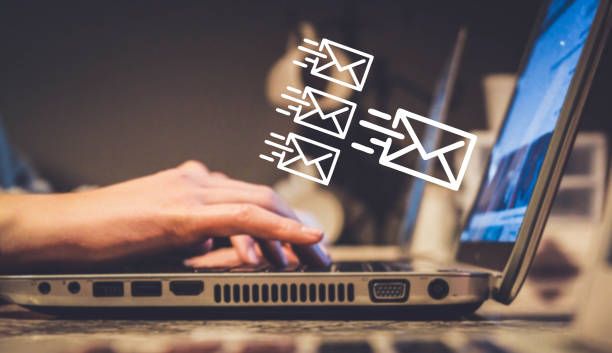Email has become an integral part of our personal and professional communication, and when our messages encounter bounce back issues, it can be frustrating. Bounce backs occur when an email fails to reach its intended recipient and is returned with an error message. In this comprehensive guide, we will explore how to fix email bounce back issues in Outlook, providing expert strategies to resolve common delivery failures and improve your email deliverability.
Understanding Email Bounce Backs

What Causes Email Bounce Backs?
Email bounce backs can happen due to various reasons, including invalid email addresses, full mailboxes, server errors, spam filters, or network issues. Understanding the underlying causes is crucial to effectively resolve bounce back problems.
Types of Bounce Back Messages
Bounce back messages can provide insights into the reason for the delivery failure. Common bounce back types include hard bounces, soft bounces, mailbox full errors, blocked emails, or spam content detection. Each type requires a specific approach for resolution.
Resolving Email Bounce Back Issues in Outlook

- Verify Recipient Email Address: Ensure the recipient's email address is accurate and up to date. Typos or outdated information can lead to delivery failures. Double-check the recipient's email address before sending the message.
- Check the Bounce Back Error Message: Carefully read the bounce back error message to identify the specific issue. The error message often provides clues about the reason for the delivery failure, such as an invalid address, mailbox full, or blocked domain.
- Address Invalid Email Addresses: For hard bounce errors caused by invalid or non-existent email addresses, remove them from your contact list or address book. Keeping such addresses can negatively impact your email deliverability.
- Resend the Email: If the bounce back was a temporary issue (soft bounce), you can try resending the email. However, ensure that you have addressed the underlying issue. For example, if the recipient's mailbox was full, confirm that they have freed up space before resending.
- Avoid Common Spam Triggers: Craft your emails in a way that avoids triggering spam filters. Use clear and relevant subject lines, avoid excessive use of capitalization and exclamation marks, and refrain from using spam-triggering words or phrases.
- Review Attachments and Links: Attachments or links in your email could trigger spam filters or raise security concerns. Ensure that your attachments are safe and necessary, and the links are legitimate and relevant to the email content.
- Manage Mailbox Storage: Regularly clean up your mailbox and delete unnecessary emails to ensure sufficient storage space. A full mailbox can lead to delivery failures and bounce backs.
- Contact the Email Administrator: If the bounce back issue persists or the error message suggests a server-related problem, contact your email administrator or IT support for further assistance. They can provide guidance and resolve server-side issues.

Preventing Future Bounce Backs:
- Maintain Clean Email Lists: Regularly clean and update your email lists to remove invalid or inactive email addresses. Use email verification tools to validate email addresses and ensure their accuracy.
- Implement Email Authentication: Enable email authentication protocols like SPF (Sender Policy Framework) and DKIM (DomainKeys Identified Mail) to verify the authenticity of your outgoing emails. This helps improve deliverability and reduces the chances of your emails being marked as spam.
- Monitor Email Delivery Metrics: Keep track of your email delivery metrics, including bounce rates, spam complaints, and open rates. Analyze the data to identify patterns or issues and take corrective measures accordingly.
- Stay Informed About Email Best Practices: Stay updated with email best practices, industry standards, and anti-spam guidelines. By following these guidelines, you can ensure that your emails are compliant and have a higher chance of reaching the recipients' inboxes.
Frequently Asked Questions (FAQs):
- Why do my emails bounce back only from specific recipients?
Bounce backs can occur if the recipient's email server has strict spam filters or if your domain or IP address has been blacklisted. Contact the recipient to verify if they are receiving emails from other senders and investigate any potential issues with your email reputation.
- Can bounce back issues be caused by my email client, such as Outlook?
While bounce back issues are typically related to factors outside of your email client, certain settings or configurations in your email client could impact deliverability. Ensure that your email client is properly configured, and check for any settings that may affect email delivery.
- Is it possible for emails to bounce back without an error message?
In some cases, emails may bounce back without an explicit error message. This could occur if the recipient's email server rejects the email silently or if there are temporary network issues. Monitoring your email delivery metrics can help identify such cases.
- Should I contact the recipient when my email bounces back?
If you receive a bounce back message indicating an invalid email address or another issue related to the recipient's mailbox, it may be worth reaching out to confirm the correct email address or inform them of the delivery failure.
- Are bounce backs a common occurrence in email communication?
Bounce backs can happen occasionally, even for experienced email senders. By implementing best practices and promptly addressing delivery issues, you can minimize the occurrence of bounce backs and maintain effective email communication.
Conclusion
Email bounce backs in Outlook can be frustrating, but they can be resolved by following effective strategies. By understanding the causes of bounce backs, properly interpreting error messages, and taking proactive measures to resolve issues, you can ensure successful email delivery and minimize bounce back occurrences. Implement the provided techniques, maintain clean email lists, and adhere to email best practices to enhance your email deliverability and achieve seamless communication in Outlook.

